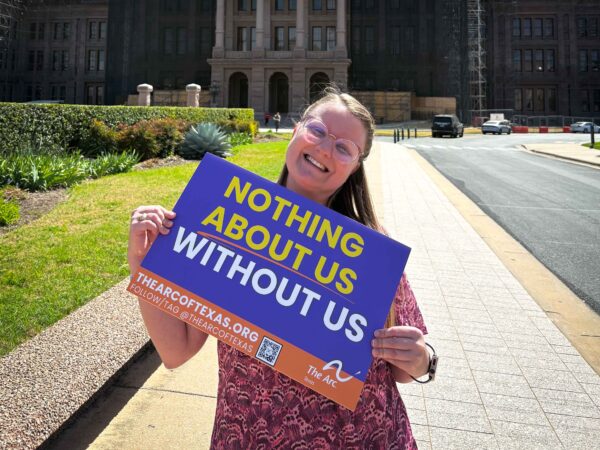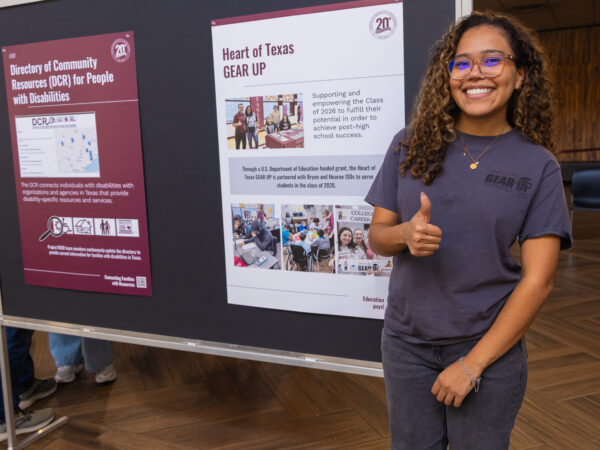Building Back Better: Lessons Learned From Hurricane Harvey
Hurricane Harvey first made landfall in Texas on August 25, 2017. Over the course of four days, up to 60 inches of rain fell in southeast Texas. About 900,000 households applied for FEMA funding. Of those households, close to 200,000 included someone with a disability.
Dr. Laura Stough, associate professor of educational psychology, watched as news reports highlighted the tens of thousands losing their homes to the storm. Because of her research on the impact of disasters on those with disabilities, she jumped into action.
Stough and her colleagues at the Center on Disability and Development at Texas A&M and Project REDD monitored events in Houston and its outlying communities. They provided information and help to victims, first responders and volunteer organizations at the local, state and national levels.
“We know that people with disabilities have been found to die at a higher rate after a disaster. They experience larger property loss. It also takes them longer to recover from disasters. Part of that is they are at risk of being disconnected from their support services.”
Disasters have not always been Stough’s main research focus. This changed when Hurricane Katrina hit the coast of Louisiana in 2005. At the time, she was on faculty development leave and received a call from the Peace Corps. Having served as a volunteer in the past, the Peace Corps requested she enlist again as part of the national response to the storm.
“It was that experience that led to my commitment to and fascination with this area. That’s been the focus of my scholarship and service since August 29, 2005.”
When Stough returned to Texas A&M in 2006, she received a grant to study the case management of disaster survivors with disabilities.
With this grant, she started Project REDD: Research and Evaluation on Disaster and Disability. She and her colleagues have produced resources for emergency management personnel, case managers, volunteer organizations, county extension agents and the general public. Stough’s work has also had national and international impact among scholars and practitioners.
When Harvey made landfall in August 2017, Stough wanted to support the recovery effort by creating an online directory of resources. Unfortunately, immediate access to grant funding was not available. She sacrificed her professional development fund to get the directory up and running as quickly as possible.
“Faculty get funds each year for professional development. I took that money, hired a graduate student and we put together the REDDy Directory.”
When the Association of University Centers on Disability and the American Association on Intellectual Disabilities heard what Stough was doing, they immediately offered their support. The result, the REDDy Directory (REsources for Disasters and Disability), is an online guide that addresses needs of individuals with disabilities. She was able to share the directory with individuals across the state.
Stough’s long-term goal is to equip other states with similar directories. For now, she hopes that people with disabilities, their families, and case managers can use the directory to stay up-to-date on resources available throughout the state of Texas.
In December 2017, W. Nim Kidd, division director of the Texas Division of Emergency Management and Ron Lucey, executive director of the Governor’s Committee on People with Disabilities sent a letter to CEHD Dean Joyce Alexander. They requested Stough be able to serve as Chair of the Texas Disability Task Force on Emergency Management.
They wrote, “the effects of Hurricane Harvey have created special circumstances which call for increased support of citizens of Texas. Dr. Stough’s expertise as a researcher on the effects of disasters on people with disabilities represents a valued and unique contribution to the committee.”
Even though people with disabilities face extra barriers during recovery, they share the same goal of others. The biggest concern is wanting to return to their homes, neighborhoods and towns. Dr. Stough hopes that, when rebuilding, cities and towns focus on making the new infrastructure inclusive for all.
“When we are reconstructing public infrastructure we have to do so with an eye to accessibility. We need to build back better and more inclusively than before,” said Dr. Stough.
“Universal building design principals should be used so that people with diverse physical, sensory and cognitive abilities are not threatened by future disasters.”
Learn more about the REDDy Directory at: disabilityresources.tamu.edu/
About the Writer
Ashley is the Media Relations Coordinator and responsible for news coverage in the Department of Teaching, Learning and Culture as well as the Department of Educational Psychology.
Articles by AshleyFor media inquiries, contact Ashley Green.
Fundraising
To learn more about how you can assist in fundraising, contact Amy Hurley, Director of Development ahurley@txamfoundation.com or 979-847-9455














